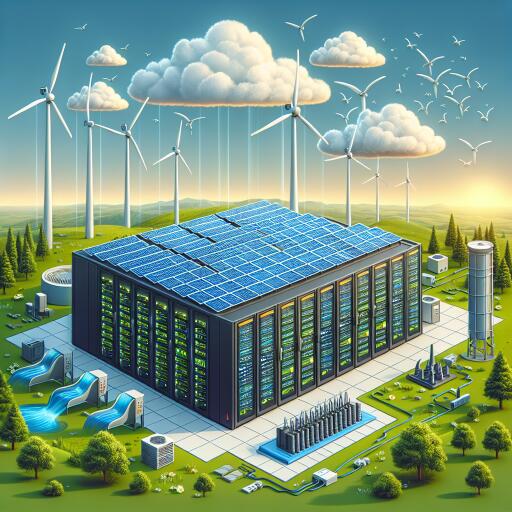Driving Towards a Greener Future: The Role of Sustainable Data Centers in Digital Transformation
In an era where data’s dominion is ever-expanding, its exponential growth is shaping the very backbone of our digitalized lives. With the global digital landscape swelling to an estimated 291 zettabytes by 2027, the surge in data from digital enterprises, IoT devices, and online consumer activities necessitates an infrastructure capable of handling such colossal volumes efficiently and sustainably.
Data centers, the unsung heroes of the digital age, play a pivotal role in the seamless operation of our interconnected world. These facilities, responsible for the storage, processing, and dissemination of data, have become critical engines of growth and innovation. Yet, their operational efficacy comes at a cost, particularly to the environment, due to the significant energy consumption required for their workings and the cooling of their vast banks of servers.
The carbon footprint associated with data storage is staggering, with estimates suggesting that storing a mere terabyte of data could yield up to two tonnes of CO2 annually. This figure brings to light the pressing need for a shift towards greener, more sustainable practices within the industry.
Green data centers emerge as harbingers of change in this context, offering a pathway to reduce the ecological impact of digital operations. These facilities prioritize the use of renewable energy, adopt advanced, energy-efficient technologies, and innovate cooling methods to mitigate environmental damage without compromising their performance.
India’s burgeoning data center market, currently ranked 13th globally with plans to expand significantly, is at the forefront of this transition. Innovative cooling techniques such as liquid and free-air cooling, paired with design efficiencies like the use of Cellular Lightweight Concrete (CLC) blocks for better insulation, exemplify efforts to optimize energy use.
Moreover, the push for energy-efficient hardware and the implementation of vertical scaling technologies showcase how data centers can enhance their operational efficiency. Vertical scaling, in particular, emphasizes the importance of optimizing the capabilities of existing hardware, thereby reducing the need for additional energy-intensive servers.
Adopting effective data management strategies further complements these efforts. Techniques such as data compression, deduplication, and lifecycle management significantly reduce the volume of data needing storage and, consequently, the energy required for its preservation.
Cloud computing approaches and the integration of artificial intelligence for energy optimization represent advanced strategies to address the sustainability challenge head-on. These technologies not only improve operational efficiency but also pave the way for significant reductions in energy consumption, particularly within cooling operations.
The evolution towards sustainable data management is a collaborative journey, necessitating the involvement of tech companies, governments, and consumers alike. It is through shared initiatives and the embrace of innovative technologies that impactful progress can be made toward environmental stewardship in the digital realm.
As we gaze into the future, the integration of sustainability principles with technological development offers a promising vista. It envisions a world where digital transformation is not only about economic growth and innovation but also about conscious responsibility towards our planet. This harmonious merge of objectives underlines the importance of green data centers in sculpting a sustainable digital future, where technology and environmental care go hand in hand, ensuring a thriving planet for generations to come.








